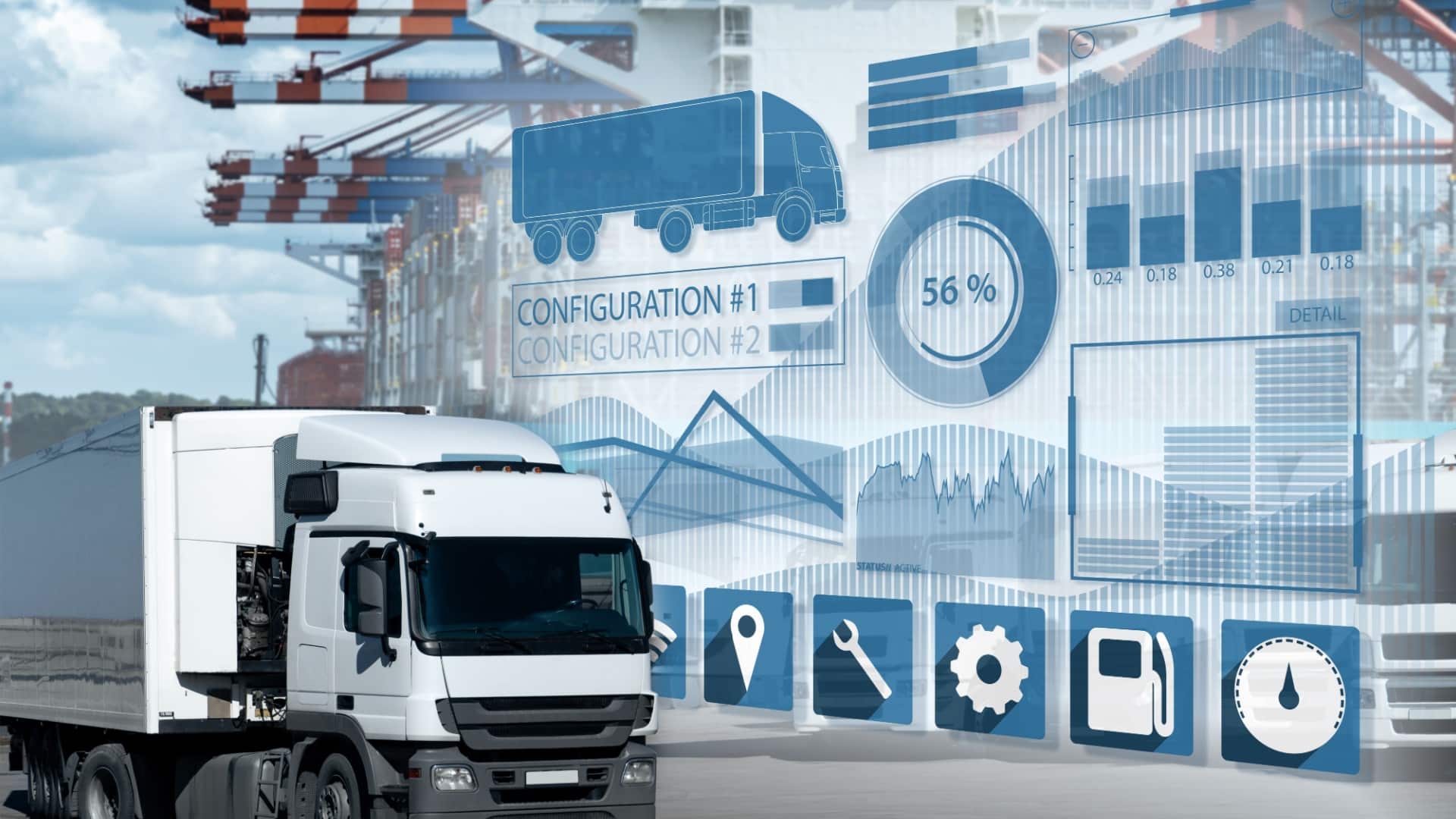Enhancing Fleet Efficiency with IoT Solutions

Introduction to IoT in Fleet Management
IoT in fleet management is redefining efficiency, safety, and cost. IoT devices, including GPS trackers and telematics, provide fleet management with real-time information on vehicle whereabouts, operational conditions, and driver behavior. As a result, it enables instant modifications and route optimization. Furthermore, IoT also supports predictive maintenance while alerting managers to vehicle concerns before they cause costly outages.
Consequently, it extends fleet vehicle life and lowers unscheduled repair expenses. IoT-enhanced fleet systems manage driving patterns and idle hours to boost fuel economy. Integration with AI and machine learning accelerates data analysis. It gives fleet operators actionable insights for better operations. Hence, IoT renders fleet management more connected and data-driven, which lowers costs and strengthens service dependability.
Remember, the global IoT fleet management market was $10.33 billion in 2022 and might reach $32.43 billion by 2028, thanks to the above advancements, expanding 21% from 2023 to 2028. North America is predicted to dominate 2023–2028 with a 35% market share. At the same time, Fortune Business Insights projects that the international fleet management software market will grow 19% to $79.82 billion by 2030 from $23.67 billion in 2023.
The Core of IoT Fleet Management
Integration of IoT Technology in Fleet Management Systems
IoT in fleet management uses interconnected devices, sensors, and software that communicate and process data in real time. Thus, it alters the management of vehicle fleets. The integration relies on GPS trackers, RFID sensors, and OBD systems in fleet cars to gather and transmit data. Contemporary IoT solutions analyze device data using cloud-based analytics. It allows fleet managers to track vehicle condition and position.
Significantly, telematics technology uses cellular networks to transmit data between cars and central management systems. This configuration captures GPS position, vehicle behavior, and use habits. Apart from that, integration with edge computing lowers latency and speeds up fleet operations decisions while processing data closer to the source. AI/telematics systems decrease accidents by 40%, thefts by 25%, idle time by 25%, and downtime by 45%.
Enhancing Efficiency through Real-Time Tracking and Predictive Maintenance
IoT in fleet management increases efficiency through vehicle tracking, diagnostics, and predictive maintenance. Fleet managers optimize route planning and asset usage while monitoring vehicle whereabouts and conditions. Fuel economy and service confidence are affected by real-time tracking, which allows for traffic, weather, and emergency rerouting. Telematics data may identify a vehicle’s fuel use and idle periods for fuel-saving solutions.
IoT devices monitor engine temperature, tire pressure, and brake wear in real time to gauge vehicle health. Predictive maintenance employs this data to anticipate vehicle problems. Machine learning algorithms forecast maintenance schedules according to past data. It helps lower pricey breaks and lengthen vehicle lifespans. Predictive maintenance may save costs by 25-30% and boost vehicle availability by 70-75%. It shows IoT’s impact on fleet management efficiency.
Innovative IoT Fleet Management Solutions

Innovative IoT Solutions in Fleet Management
IoT in fleet management has reshaped how fleet operators oversee assets and operations, thanks to current technologies that allow real-time data collection and analytics. IoT technologies may provide worldwide connectivity with deep integration into radio access networks to enable data interchange between cars regardless of geography. Fleet managers get continuous vehicle location and status data via cellular and satellite connections using this technology in distant places. IoT and machine learning algorithms may also estimate car maintenance requirements using real-time engine diagnostics and use trends.
Companies can equip fleet vehicles with telematics devices that capture extensive onboard diagnostics (OBD) data, enabling them to analyze vehicle performance and health. This data allows for proactive maintenance suggestions, ensuring that vehicles operate efficiently and reducing the risk of unexpected breakdowns. These platforms use predictive analytics on cloud-based systems to recommend maintenance before breaks. Edge computing in fleet management analyzes data on local devices rather than a central server to speed up processing and response times. It decreases latency for applications like ADAS.
Technologies and Platforms Enhancing Fleet Management Efficiency
IoT in fleet management utilizes GPS and RFID for better vehicle monitoring and asset management. Real-time GPS position monitoring is indispensable for route planning and scheduling. This technology and GIS provide route planning that considers traffic and road construction. Subsequently, it saves travel time and fuel consumption. What is more, RFID technology also monitors goods for security and transportation compliance. RFID-enabled IoT devices track product loading and unloading while decreasing mistakes and theft.
On the driver monitoring front, companies might use video telematics and driving behavior analytics to follow drivers. Cameras and sensors monitor driving patterns and warn management of unusual behaviors, including overspeeding, forceful braking, and rapid acceleration. Such findings benefit driver instruction and road safety. Last but not least, IoT enhances fuel management. Fuel sensor devices reveal fuel use inefficiencies and savings. Platforms may use such data to propose idle time minimization and fleet fuel optimization.
FIC Use Cases: Demonstrating Real-World Impact
Smart Fleet Management System Implementation
In our Smart Fleet Management System, we’ve incorporated up-to-the-minute IoT into fleet management solutions for greater fleet control and efficiency. While introducing Electronic Logging Devices and IoT-based telematics, we have lowered client operating expenses. For example, optimized route management and driver behavior cut idle periods and fuel consumption in one of our deployments of over 80,000 US trucks.
Real-Time Diagnostics and Maintenance
Real-time diagnostics and maintenance notifications are also available via our IoT in fleet management. This feature reduced unneeded interruptions. Our solution notifies fleet managers of probable vehicle faults so that they can respond immediately. That increases vehicle uptime across a large-vehicle fleet for better availability and service solidity.
Enhanced Safety and Compliance
Our IoT solutions promote safety and compliance with precise, time-stamped information. We built safety-compliant systems using sensors and AI analysis. For instance, because of fleet drivers’ accurate tracking and behavior monitoring, our IoT fleet management solution for a logistics firm might reduce safety occurrences and compliance breaches.
Check out FIC’s IoT fleet management solutions to boost your fleet operations.





